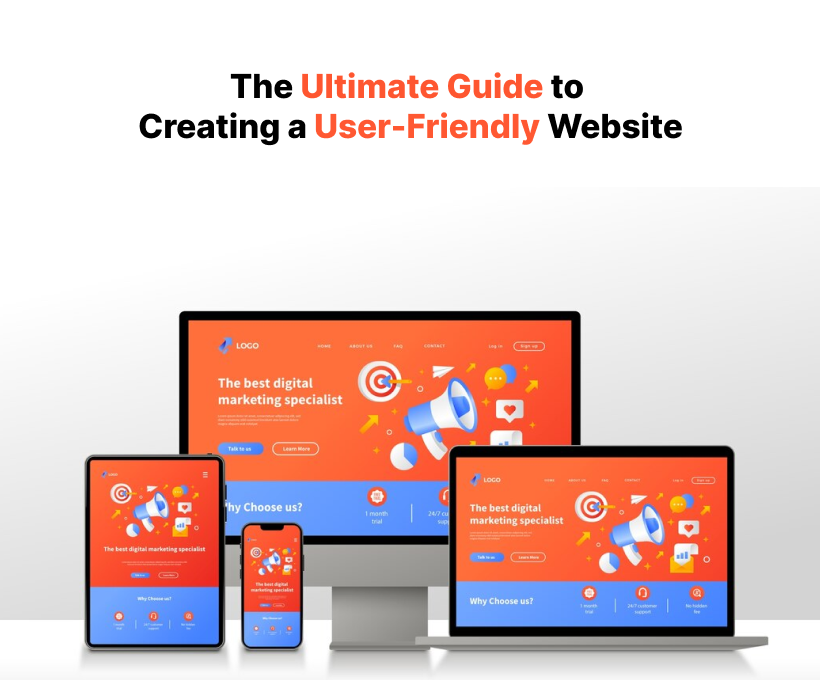Creating a user-friendly website is crucial for keeping visitors engaged and ensuring they have a positive experience. As a WordPress designer, your goal is to build sites that are not only visually appealing but also easy to navigate and use. In this guide, we’ll explore the best practices for designing a user-friendly WordPress website, from planning and layout to accessibility and performance optimization.
1. Planning Your Website
Before diving into design and development, it’s essential to plan your website thoroughly. Understanding your audience, defining your goals, and mapping out the user journey are key steps in this process.
- Identify Your Audience: Knowing who your target audience is will help you design a site that meets their needs and preferences.
- Define Your Goals: What do you want visitors to do on your site? Whether it’s making a purchase, signing up for a newsletter, or reading your blog, having clear goals will guide your design decisions.
- Create a Site Map: Outline the structure of your website, including the main pages and their relationships. This will help you organize content logically and ensure easy navigation.
2. Choosing the Right Theme
Selecting a theme is one of the most important decisions you’ll make. A good theme should be responsive, customizable, and optimized for performance.
- Responsive Design: Ensure your theme looks great on all devices, from desktops to smartphones. A responsive design adapts to different screen sizes, providing a consistent user experience.
- Customization Options: Look for themes that offer a variety of customization options without requiring coding knowledge. This allows you to tailor the design to your brand.
- Performance Optimization: Choose a theme that is lightweight and optimized for fast loading times. Slow websites can frustrate users and hurt your search engine rankings.
3. Simplifying Navigation
Easy navigation is critical for a user-friendly website. Visitors should be able to find what they’re looking for quickly and effortlessly.
- Clear Menu Structure: Use a clear and concise menu structure. Include only the most important pages in the main menu and use dropdowns for subpages.
- Breadcrumbs: Implement breadcrumbs to help users understand their location on your site and easily navigate back to previous pages.
- Search Functionality: Add a search bar to allow users to find content quickly. Ensure the search results are relevant and well-organized.
4. Optimizing Content Layout
The way you organize and present content can significantly impact user experience. Aim for a clean, uncluttered layout that guides the user’s eye to the most important elements.
- Use White Space: White space, or negative space, helps break up content and makes your site easier to read. It also gives your design a more modern and professional look.
- Readable Typography: Choose fonts that are easy to read and pair them effectively. Ensure sufficient contrast between text and background colors.
- Consistent Design Elements: Maintain consistency in design elements such as buttons, headings, and color schemes. This creates a cohesive look and makes your site more intuitive.
5. Enhancing Accessibility
Making your website accessible ensures that all users, including those with disabilities, can access and navigate your site.
- Alt Text for Images: Provide descriptive alt text for all images. This helps screen readers describe images to visually impaired users.
- Keyboard Navigation: Ensure that all interactive elements (e.g., buttons, links, forms) can be accessed and used via keyboard.
- Readable Fonts and Colors: Use readable fonts and avoid color combinations that can be difficult to distinguish for color-blind users.
6. Improving Performance
A fast-loading website is essential for user satisfaction and SEO. Here are some tips to optimize your site’s performance:
- Optimize Images: Compress and resize images to reduce their file size without compromising quality. Use modern image formats like WebP for better performance.
- Leverage Caching: Use caching plugins like WP Rocket or W3 Total Cache to store static versions of your pages, reducing server load and speeding up load times.
- Minimize Plugins: Only use essential plugins and regularly update them to ensure compatibility and security. Too many plugins can slow down your site.
7. Ensuring Mobile-Friendliness
With the increasing use of mobile devices, it’s crucial to design your site with mobile users in mind.
- Responsive Design: As mentioned earlier, ensure your theme is responsive and adapts to different screen sizes.
- Touch-Friendly Elements: Make buttons and links large enough to be easily tapped on mobile devices. Ensure sufficient spacing between clickable elements.
- Simplified Navigation: Use a mobile-friendly navigation menu, such as a hamburger menu, to save space and provide a better user experience.
8. Testing and Iterating
Finally, testing your website and making improvements based on user feedback is essential for maintaining a user-friendly site.
- User Testing: Conduct user testing to gather feedback on your site’s usability. Identify pain points and areas for improvement.
- A/B Testing: Use A/B testing to compare different design elements and determine which performs better.
- Regular Updates: Keep your WordPress core, themes, and plugins up to date to ensure security and compatibility.
Conclusion
Creating a user-friendly website involves careful planning, thoughtful design, and continuous optimization. By following these best practices, you can build a WordPress site that not only looks great but also provides an exceptional user experience. Remember, a happy user is more likely to return, engage with your content, and achieve your website’s goals. Happy designing!

